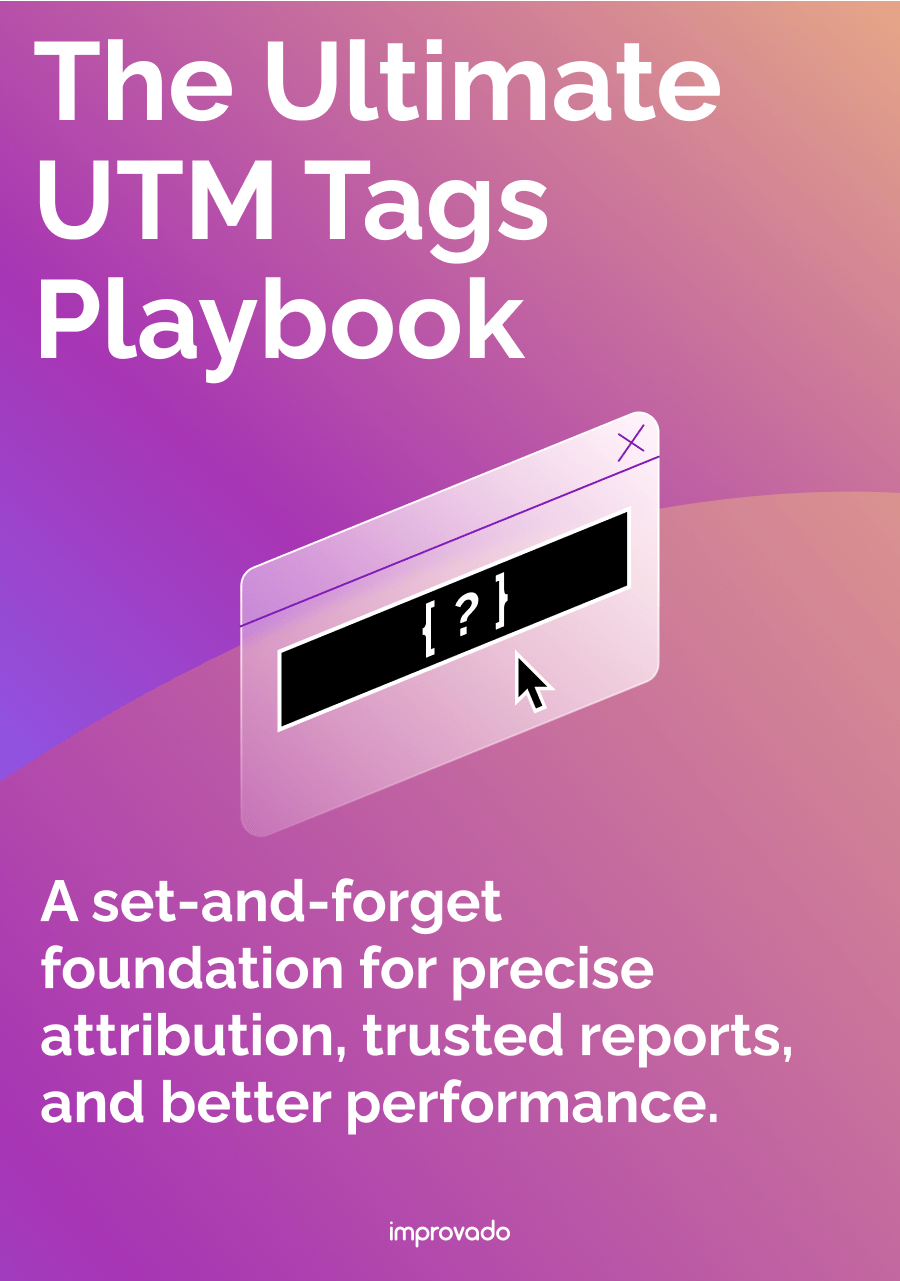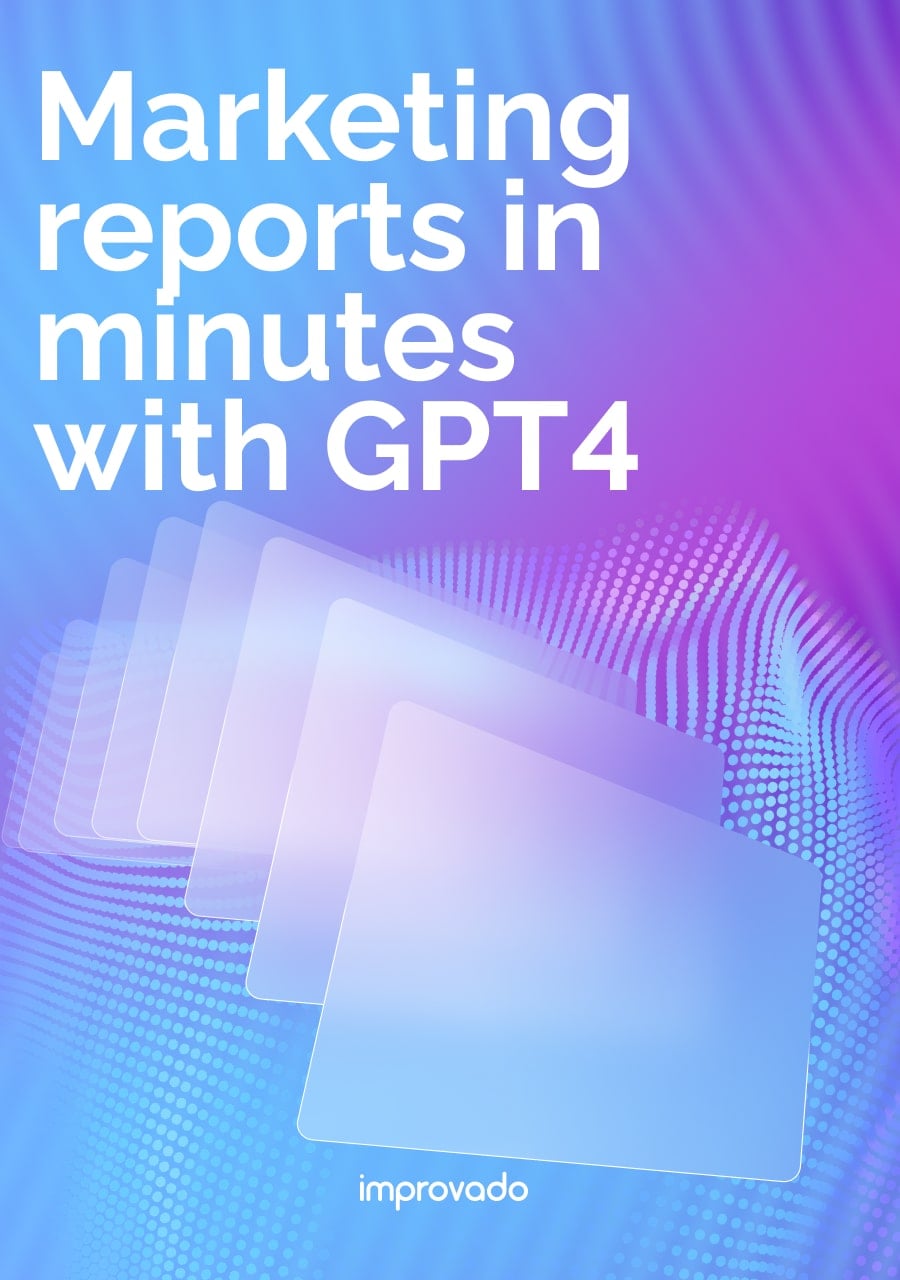The B2B marketing landscape is more complex than ever. Decision-making involves entire committees, sales cycles are long, and proving the direct impact of your marketing efforts on revenue is a constant challenge.
Without a cohesive B2B marketing strategy, marketing teams risk wasting budget on the wrong channels, creating content that doesn’t resonate, and failing to align with their sales counterparts. The result is a leaky funnel, missed opportunities, and an inability to demonstrate ROI to the C-suite.
This comprehensive guide will walk you through building a powerful B2B marketing strategy from the ground up. We’ll cover foundational components, essential channels, advanced approaches like ABM, and the critical role of data in tying it all together.
Key Takeaways
- B2B vs. B2C: B2B marketing focuses on rational decision-making, long sales cycles, and building relationships with buying committees, whereas B2C is often transactional and emotionally driven.
- Core Components: A successful B2B strategy is built on a defined ICP, a clear value proposition, a data-driven content engine, foundational SEO, and a connected tech stack.
- Key Channels: Top B2B channels for 2025 include content marketing (blogs, whitepapers), SEO, email nurturing, LinkedIn, and targeted paid advertising.
- Advanced Approaches: Account-Based Marketing (ABM) and strong Sales & Marketing Alignment (Smarketing) are critical for targeting high-value accounts and improving conversion rates.
- Measurement is Key: Tracking metrics like MQLs, SQLs, CAC, and LTV, and using analytics tools to prove ROI are non-negotiable for modern B2B marketers.
What Is B2B Marketing?
The primary goal of a B2B marketing strategy is not just to generate a single sale but to build long-term relationships, establish trust, and position the company as an expert and valuable partner. This involves educating potential customers, nurturing leads through a complex buying funnel, and providing solutions that solve specific business pain points.
How B2B Marketing Differs from B2C
While both B2B and B2C marketing aim to sell something, their audiences, motivations, and processes are fundamentally different. Understanding these distinctions is the first step toward building an effective strategy.
- Audience and Decision-Making: B2B marketing targets a "buying committee" of multiple stakeholders with different roles and priorities. B2C marketing typically targets a single individual.
- Sales Cycle: B2B sales cycles are often long and complex, lasting weeks, months, or even years. B2C cycles are usually short and can be completed in minutes or hours.
- Motivation: B2B buyers are driven by logic, data, and potential ROI. They need to justify their purchase based on business value. B2C buyers are more often influenced by emotion, brand status, and personal desire.
- Content Focus: B2B content is educational and in-depth, using formats like whitepapers, case studies, and webinars to build authority. B2C content is often more entertaining, aspirational, and focused on immediate brand awareness.
Key Components of a Successful B2B Marketing Strategy
A robust B2B marketing strategy isn’t just a collection of tactics; it’s a framework built on several interconnected pillars.
1. Define Your Target Audience and Ideal Customer Profile (ICP)
You can't effectively market to "everyone." A clearly defined Ideal Customer Profile (ICP) is the foundation of your entire go-to-market strategy. An ICP describes the perfect company you want to do business with, considering factors like industry, company size, revenue, and technological maturity. From there, you can develop buyer personas for the key decision-makers within those companies.
- Segmentation: Start by categorizing potential business clients into distinct segments based on factors such as industry type, size, and geographical location. This allows for a more tailored approach when targeting specific groups.
- Detailed Personas: Go beyond basic demographics. Construct detailed personas for decision-makers, considering aspects such as their job roles, primary challenges, values, and sources of information. A CTO, for instance, might be more concerned with the technical robustness of a product, while a CFO may prioritize cost-effectiveness. Understanding these nuances ensures messaging precision.
- Feedback Channels: Establish mechanisms for feedback, like surveys or one-on-one interviews with existing B2B clients. Their insights can provide invaluable information on potential gaps in the market or areas of improvement in your offerings.
- Journey Mapping: Recognize the stages a business goes through when deciding on a purchase or partnership. This journey, often more complex in the B2B realm, may involve multiple touchpoints, from initial awareness to final decision. Understanding this journey aids in creating timely and relevant interventions.
- Industry Forums and Groups: Participate in or monitor industry-specific forums, LinkedIn groups, or conferences. These platforms can offer direct insights into current discussions, pain points, and emerging needs within your target sectors.
- Data Analysis: Utilize data analytics tools to gather information about your audience's online behavior, preferences, and engagement patterns. Analyzing this data can provide patterns and trends, further refining audience understanding.
2. Establish a Clear Value Proposition
Once you define your ideal customer profile, the next step is to articulate why your solution matters to them and why it is superior to alternatives. A strong value proposition translates product capabilities into measurable business outcomes, speaking directly to organizational priorities like efficiency, revenue acceleration, cost reduction, or risk mitigation.
A compelling value proposition should:
- Address the core pain points and organizational constraints your ICP faces
- Quantify impact where possible (e.g., reduced CAC, faster deployment, higher conversion rates, increased retention)
- Clarify what makes your solution meaningfully different, not just “better” or “easier”
- Align with executive-level language, not feature descriptions or internal jargon
Consistency matters. This message should anchor positioning, sales collateral, website copy, paid campaigns, and outbound motions, ensuring every touchpoint reinforces the same strategic narrative.
3. Develop a Data-Driven Content Marketing Engine
Content underpins nearly every B2B acquisition, nurturing, and enablement motion. A modern content engine operates like an intelligence system designed to educate prospects, accelerate deal velocity, and support retention.
Key principles include:
- Producing content for every stage of the funnel, including awareness, evaluation, justification, and adoption
- Using customer and market insights to shape editorial priorities (search data, competitor gaps, win-loss interviews, sales feedback)
- Mapping assets to buying committees, job functions, and use cases, not a single buyer
- Creating depth assets that enable trust and credibility: research reports, case studies, benchmarking data, product deep-dives, and executive frameworks
- Operationalizing distribution via SEO, paid social, partnerships, customer marketing, and sales enablement channels
4. Implement Foundational SEO
Search remains a primary discovery and validation channel in B2B, especially for high-consideration solutions. Foundational SEO ensures your buyers can find and trust you when they begin evaluating the problem you solve.
True enterprise B2B SEO includes:
- Technical SEO: fast, crawlable pages; clean architecture; structured data; secure environments
- Search-intent alignment: content built around commercial queries, category keywords, and problem-solution paths relevant to buying journeys
- On-page optimization: precise keyword mapping, clear value messaging, and content structured to answer evaluation-focused questions (use cases, pricing models, integrations, ROI)
- Off-page authority building: strategic link acquisition, analyst mentions, PR amplification, thought leadership placement
- Measurement: tracking rankings alongside pipeline influence, demo requests, deal acceleration, and conversion quality
The goal isn’t just visibility, it's to drive qualified demand and support sales cycles with depth, clarity, and authority.
5. Leverage a Connected Tech Stack (CRM, Analytics, Automation)
Modern B2B marketing runs on technology. A well-integrated martech stack is crucial for efficiency and insight. Key components include:
- CRM (Customer Relationship Management): The central hub for all customer and lead data (e.g., Salesforce, HubSpot).
- Marketing Automation: Tools for nurturing leads at scale through email, social media, and other channels (e.g., Marketo, Pardot).
- Analytics Platforms: Systems for tracking performance and understanding the customer journey.
To truly unify your strategy, a robust data infrastructure is essential. Enterprise teams often rely on platforms like Improvado to consolidate data from over 500 marketing and sales sources into a single source of truth, eliminating data silos from the start.
Top B2B Marketing Channels and Tactics for 2025
With a solid strategic foundation, you can select the right channels to reach your target audience. A multi-channel approach is usually most effective.
Content Marketing (Blogs, Whitepapers, Case Studies)
Content remains the central engine of B2B acquisition and deal acceleration. It shapes perception, frames problem space, and enables buyers to self-educate long before interacting with sales.
Key content formats and their roles:
- Blogs: Capture intent traffic, shape category understanding, and influence early-stage research. Focus on expertise, not volume or generic keyword farming.
- Whitepapers, Research Reports, and eBooks: Provide structured depth and analysis. Exchange value for contact data and sales-qualified engagement signals. Strong fit for technical buyers, CFO stakeholders, and compliance-sensitive industries.
- Case Studies: Demonstrate ROI, adoption impact, and operational value with real benchmarks and outcomes. Modern B2B buyers expect quantifiable results.
The most effective content programs operate like product lines — backed by editorial planning, buyer motion data, and tied directly to pipeline influence, not traffic alone.
Search Engine Optimization (SEO)
SEO remains one of the highest-efficiency demand-generation levers when executed against buyer-intent patterns rather than vanity keywords.
A modern B2B SEO program should:
- Prioritize commercial and evaluative queries aligned to product use cases
- Support revenue-influencing topics (pricing, integration guides, vendor comparisons, ROI frameworks)
- Maintain strong technical foundations for crawlability and performance
- Integrate with paid search, not compete with it
The result is compounding acquisition efficiency and a durable knowledge moat that improves sales velocity and category authority.
Email Marketing and Lead Nurturing
B2B buying cycles are long, collaborative, and risk-averse — which makes structured nurturing essential.
Effective programs include:
- Behavior-based email sequences tied to content engagement and CRM stages
- Segmented messaging for technical users, exec sponsors, and procurement
- Multi-touch nurture paths that support evaluation and internal stakeholder alignment
The objective isn’t volume. It’s guided progression from awareness to validated intent to purchase consensus.
Social Media Marketing (LinkedIn-Led)
Social plays a strategic role in credibility building and category education. LinkedIn remains the primary distribution layer for B2B trust, network effects, and amplification.
High-value motions include:
- Thought leadership from subject-matter experts and executives
- Employee-driven distribution and product storytelling
- Targeted sponsored content tied to industry, seniority, and buying stage
- Direct audience research and community engagement
Paid Advertising (PPC & Targeted Social Ads)
Paid campaigns accelerate access to in-market buyers and support controlled pipeline scaling.
Key formats:
- Paid Search: Capture high-intent queries tied to category, competitor, and problem-solution keywords. Best for mid- and bottom-funnel capture.
- Paid Social (LinkedIn, programmatic B2B networks): Target by role, company tier, tech stack, or industry signals. Effective for awareness, education, and driving content engagement in complex verticals.
- Retargeting and ABM Ads: Reinforce messaging, accelerate deals, and keep buying groups engaged throughout evaluation cycles.
Paid acquisition works best when it's connected to content, lead scoring, and revenue metrics, and not operated as an isolated performance channel.
Specialized B2B Marketing Approaches
For B2B businesses targeting high-value accounts, general demand generation isn't always enough. Specialized strategies are needed to drive growth.
Account-Based Marketing (ABM): A Deep Dive
Account-Based Marketing (ABM) is a focused B2B strategy where marketing and sales teams collaborate to target a specific set of high-value accounts. Instead of casting a wide net, ABM treats each target account as a "market of one," with highly personalized campaigns and messaging designed to resonate with the specific needs of that organization and its buying committee.
Key Steps to Launch an ABM Motion:
- Identify and Select Target Accounts: Work with sales to create a list of best-fit, high-value companies that align with your ICP.
- Research Accounts and Key Contacts: Map out the organization, identify the key decision-makers, and research their specific pain points and priorities.
- Create Personalized Content: Develop content and messaging that speaks directly to the challenges and goals of the target account.
- Execute Coordinated Campaigns: Launch multi-channel campaigns (e.g., targeted ads, personalized emails, direct mail) that are orchestrated between marketing and sales.
- Measure and Optimize: Track engagement at the account level, not just individual lead metrics, to measure progress and refine your approach.
The Importance of Sales and Marketing Alignment (Smarketing)
"Smarketing" is the process of integrating your sales and marketing teams to create a single, cohesive revenue engine.
In B2B, where the customer journey is long and complex, misalignment between these two departments leads to lost leads, wasted effort, and frustrated teams. When aligned, they work from shared goals, use a common language for lead qualification (e.g., MQLs, SQLs), and provide a seamless experience for potential buyers.
Strategies for Better Alignment
- Shared Goals and KPIs: Both teams should be measured on revenue, not separate metrics like "leads generated" or "demos booked."
- Service Level Agreement (SLA): Create a formal agreement defining what marketing will deliver (e.g., number and quality of MQLs) and what sales will do with them (e.g., follow-up time).
- Regular Communication: Hold weekly or bi-weekly meetings to discuss campaign performance, lead quality, and market feedback.
- Unified Data: Ensure both teams are working from the same data set.
A primary cause of marketing-sales misalignment is fragmented data. Marketing optimizes against engagement signals in ad platforms and marketing automation tools, while sales operates from CRM activity and pipeline data. When each side sees a different version of performance and buyer behavior, alignment breaks.
Improvado eliminates this disconnect by centralizing, cleaning, and modeling data across the full revenue stack. It creates a shared source of truth that gives both teams visibility into what’s working, where friction occurs, and how leads progress from first touch through closed-won revenue.
Improvado enables alignment by:
- Combining marketing and CRM data (HubSpot, Salesforce, Marketo, paid media, web analytics) into a unified schema
- Standardizing naming conventions, metrics, and identifiers across channels and lifecycle stages
- Providing real-time dashboards and KPI pacing so both teams operate from the same performance signals
- Surfacing lead quality, conversion velocity, and attribution insights to focus effort on channels and campaigns that drive pipeline
- Enabling shared reporting cadences across revenue teams with automated refreshes and governed data models
With one revenue-aligned dataset, both sales and marketing gain clarity over what drives qualified pipeline, how prospects move through the funnel, and where handoff gaps exist. Instead of debating data, teams align around shared performance goals and execute faster.
Understanding the 4 Ps of B2B Marketing
The classic "4 Ps of marketing" (Product, Price, Place, Promotion) provide a useful framework for crafting your B2B marketing strategy.
- Product: In B2B, the "product" is the core solution you offer to another business. This includes not just the physical product or software, but also the accompanying support, service, and implementation that solve a business challenge.
- Price: B2B pricing is often more complex than B2C. It can involve tiered subscriptions, volume discounts, custom quotes, and long-term contracts. The price must reflect the tangible value and ROI the product delivers to the client's business.
- Place: It refers to where and how customers access your product. In the B2B space, this is less about physical stores and more about distribution channels. This includes direct sales teams, value-added resellers (VARs), online marketplaces, and your company website.
- Promotion: This covers all the tactics you use to communicate your value proposition to your target audience. It encompasses everything from content marketing and SEO to paid advertising, public relations, and ABM campaigns discussed earlier.
Measuring Your B2B Marketing Strategy for ROI
A B2B marketing strategy is incomplete without a clear plan for measuring its success. Proving ROI is essential for securing budget and demonstrating marketing's contribution to the bottom line.
Key Metrics and KPIs to Track
- Marketing Qualified Leads (MQLs): Leads that fit your ICP and have shown marketing-related engagement.
- Sales Qualified Leads (SQLs): MQLs that the sales team has accepted as worthy of direct follow-up.
- Customer Acquisition Cost (CAC): The total cost of sales and marketing efforts to acquire a new customer.
- Customer Lifetime Value (LTV): The total revenue a business can expect from a single customer account. A healthy business model has an LTV significantly higher than its CAC.
- Funnel Conversion Rates: The percentage of leads that move from one stage of the marketing and sales funnel to the next.
Tools for Marketing Analytics and Attribution
To track these KPIs effectively, you need the right tools. While Google Analytics provides website data, and individual ad platforms have their own dashboards, a centralized analytics solution is necessary to see the full picture. Marketing attribution tools help connect marketing touchpoints to final revenue, answering the question, "Which marketing efforts contributed to this sale?"
Proving ROI is the ultimate goal. While individual channel analytics are useful, a holistic view is better. Improvado automates this process, cutting reporting time by up to 75% and reducing analytics costs by consolidating the entire data pipeline. This frees up analytics teams to focus on strategic insights rather than manual data reconciliation.
Proving Marketing's Impact on Revenue
The ultimate measure of success is revenue. By integrating your marketing platform data with your CRM, you can track the journey from the first marketing touchpoint to a closed-won deal. This allows you to report on marketing-sourced revenue and marketing-influenced revenue, providing clear evidence of your team's value.
Emerging B2B Marketing Trends for 2025 and Beyond
The B2B marketing landscape is constantly evolving. Staying ahead of these trends will give you a competitive edge.
Integration of AI and Automation
AI is transforming B2B marketing, from generating content ideas and personalizing email campaigns to optimizing ad spend in real-time. Automation handles repetitive tasks, freeing up marketers to focus on strategy.
The Rise of Video Marketing and Podcasts
B2B buyers are consuming more video and audio content than ever. Short-form videos on platforms like TikTok and LinkedIn, long-form webinars, and industry-specific podcasts are becoming powerful channels for engagement and thought leadership.
Personalization at Scale
Generic messaging no longer cuts it. Using first-party data and AI, marketers can now deliver highly personalized experiences across the entire customer journey, from website content to email nurturing, making potential buyers feel understood.
Sustainable and Ethical Marketing
Modern B2B buyers, particularly younger decision-makers, care about a company's values. Demonstrating a commitment to sustainability, ethical practices, and corporate social responsibility is becoming a key brand differentiator.
Conclusion
A modern B2B marketing strategy only works when it’s backed by a reliable data foundation. Without unified performance data, aligned definitions, and visibility across the funnel, even strong strategic plans break down in execution.
Improvado provides the infrastructure to operate at this level. It consolidates data from 500+ marketing, sales, and revenue platforms, normalizes metrics, unifies IDs across touchpoints, and delivers structured, analysis-ready data to your warehouse, BI tools, or internal dashboards.
With automated pipelines, governed metrics, real-time pacing, and AI-powered insights, GTM teams gain a single source of truth that supports strategic planning, pipeline forecasting, budget reallocation, and true revenue attribution, without manual reporting or internal engineering lift.
Ready to build a strategy powered by complete, trustworthy data? Request a demo to see how Improvado can serve as the operating layer behind your B2B growth engine.
.png)




.png)
